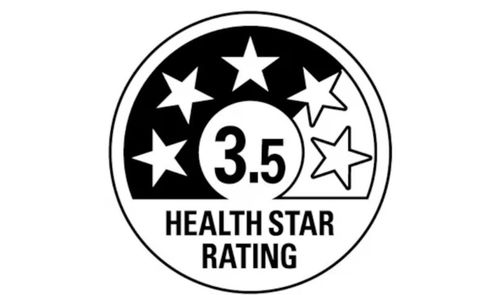Share this @internewscast.com
The packaged food sector has not achieved the government’s goal regarding the adoption of the health star rating system, prompting officials to consider making it compulsory.
Despite being introduced over a decade ago, the adoption rate of this system has stagnated at 37 percent, far short of the government’s 70 percent benchmark.
State and territory food ministers in Australia had previously warned that labeling would become mandatory if the industry did not meet the specified target by today’s deadline.

Associate Professor Alexandra Jones from The George Institute commented, “The government set very achievable targets, yet the multibillion-dollar packaged food sector has fallen significantly short.”
“Providing straightforward nutritional information shouldn’t be optional,” she added.
“Consumers deserve transparent information that enables them to easily assess the nutritional value of products available in supermarkets.”
What is the health star rating system?
The health star rating system rates the overall nutritional profile of a packaged food product from 0.5 to 5 stars.
Manufacturers input the nutritional information of their product on a government website, which uses an algorithm to calculate a rating between 0.5 and five stars.
The algorithm gives points for protein, fibre, fruits, vegetables, nuts and legumes and removes them for saturated fat, sugar and salt.
Consumers ideally then use the rating to compare similar products and ultimately make healthier choices.
However, experts say the ability to compare products is limited as only a third of products currently feature a rating.
And unsurprisingly, it’s being exploited as a marketing tool, with five-star products far more likely to feature the rating (61 per cent) compared to half-star products (16 per cent).

VicHealth chief executive Professor Anna Peeters said the findings highlight an opportunity to strengthen food labelling in Australia.
“In Australia, ultra processed foods contribute 42 per cent of the population’s daily energy intake and more than 60 per cent of supermarket shelf space is taken up by discretionary foods,” Peeters said.
“This is an opportunity for government, industry and the community to align on creating a fairer, more transparent food system that supports health and wellbeing.”
When is the system likely to be mandated?
Jones said ministers should be able to approve the regulatory standards by this time next year.
She urged them to commit to the time frame to avoid further delay.
Food Standards Australia New Zealand told 9news.com.au it is continuing preparatory work for a mandated system.
“Food ministers are expected to receive the final uptake figures in early 2026, along with an update on our preparatory work,” a spokesperson said in a statement.
“With this information, food ministers will decide whether to ask FSANZ to formally raise a proposal to consider mandating the HSR system.
“If asked to raise a proposal, we will be required to follow the legislated processes for changing the Food Standards Code as outlined in the FSANZ Act, which includes public consultation.
“FSANZ would progress this work as a matter of priority.”












